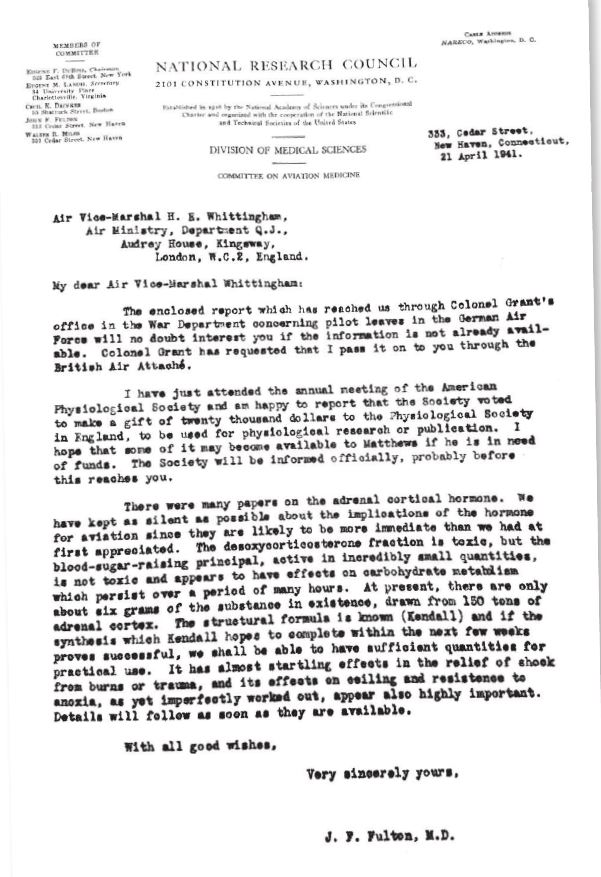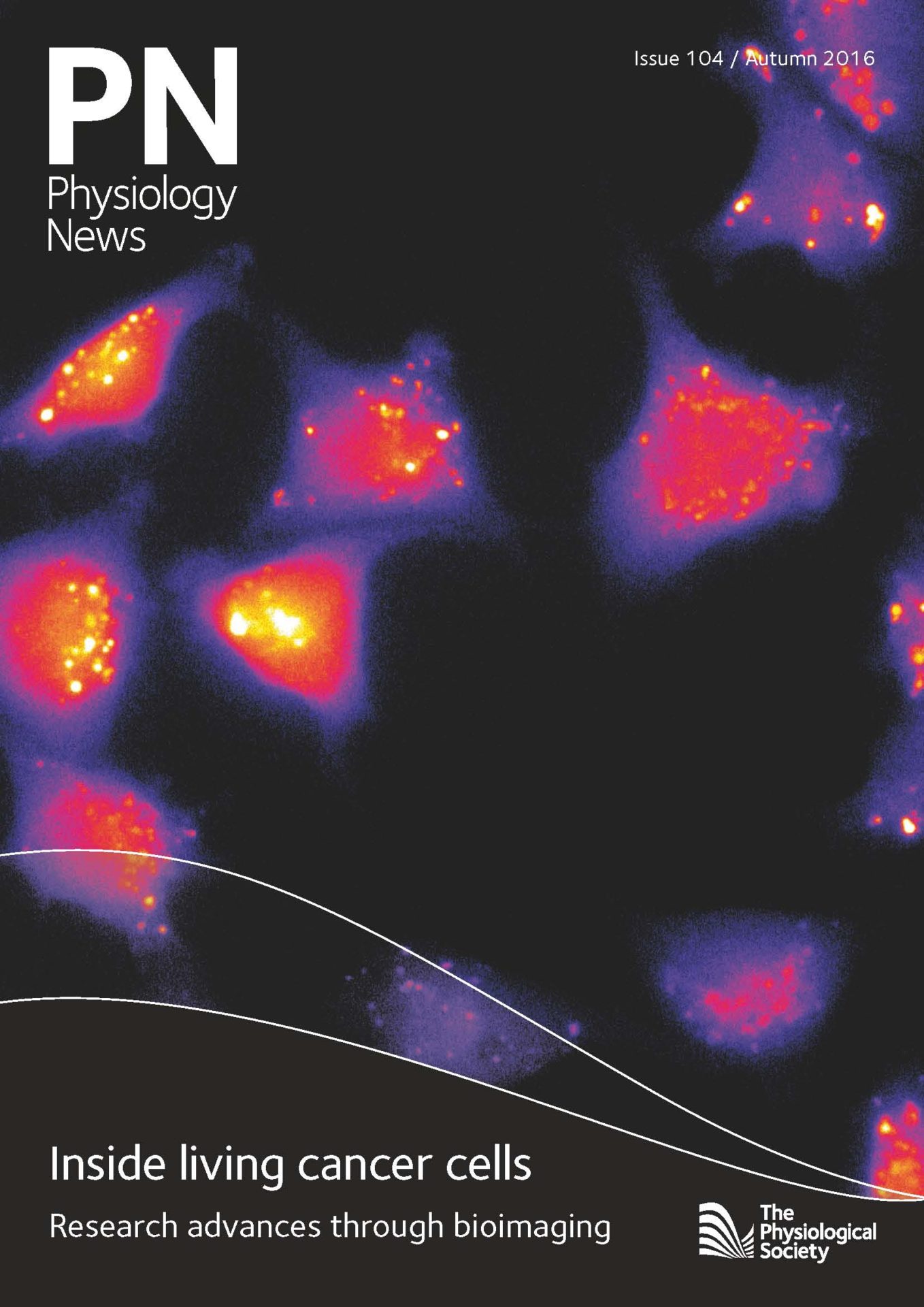
Physiology News Magazine
From the Archives: minutes of meetings 50 years ago, written by the then Meetings Secretary, EJ Denton
Events
From the Archives: minutes of meetings 50 years ago, written by the then Meetings Secretary, EJ Denton
Events
Transcribed by Roger Thomas
https://doi.org/10.36866/pn.104.22
The Physiological Society,
Institute of Physiology,
Glasgow University,
23–24 September 1966
A meeting or The Society was held in the Institute of Physiology, Glasgow University at the invitation of RC Garry, on the 23 and 24 September at 11 am. Beginning at 11am on Friday the 23rd with RC Garry in the chair, leisurely start was made with five papers before lunch. In the afternoon, partly
because of an increase in pace and partly through the withdrawal of Communication 9, the programme was up to time by tea. After tea a large number of demonstrations, including four extra, fully occupied the attention of members until 6:30 pm, when the University very kindly provided sherry in the Randolph Hall, where The Society was welcomed by Sir James Learnsonth on behalf of the University Court. During the sherry hour the adjacent Hunterian Museum was open, with exhibits ranging from local relics marking the northern-most outpost of the Roman invaders (halted, according to one of the Secretaries, not by the resolute resistance of the natives but by a realistic appreciation that it was not worth going further) to a fine collection of paintings by Whistler.
The Society dined and wined in the new refectory, the wine being provided and poured by members of the staff of the Institute of Physiology. After dinner, GL Brown thanked their host on behalf of The Society for a very pleasant meeting, and drew members’ attention to the great changes, which had taken place in the Institute of Physiology, improvements of which the chairman, BC Garry, might rightly be proud. This was echoed by CF Code in a short speech on behalf of overseas members. BC Garry, in reply, assured The Society that only their imminent arrival had ensured the department being so advanced in its alterations, and hoped that in a year or two, when these were complete, the Institute would again have the pleasure of entertaining The Society. Friday evening ended with a film show including still pictures from the Tokyo Congress by GR Hervey. The Tokyo film was unfortunately not available.
On Saturday, members first visited the Hyperbaric pressure chamber in the Western Infirmary, followed by a short Semi-annual Meeting beginning at 11:20. On the proposal of E Benton, Sybil Creed and T Scratcherd were elected Scrutineers, and they later announced that all those in the ballot had been elected. The programme for 1967 was accepted. At 11.30 am, with IA Boyd in the chair, the remaining communications were heard. After lunch, The Society visited the Veterinary Hospital and the Wellcome Research Laboratories at Garscube for a very interesting programme of demonstrations. The meeting ended with tea at 4.30 pm.
Friday 23 September: Coffee 150, Lunch 110, Tea 180, Dinner 164
Saturday 24 September: Coffee 150, Lunch 102
The Physiological Society,
Joint National Institute for Medical Research, Mill Hill
4–5 November 1966
At the invitation of B Delisle Burns, a meeting of The Society was held at the National Institute for Medical Research, Mill Hill, on the 4 and 5 November, 1966. On the Friday morning, beginning at 11 am, a very successful programme of demonstrations was arranged by OG Edholm at the MRC Laboratories, Hampstead, attended by 170 members and guests. It is twenty years since The Society had visited the Holly Hill Laboratories; Mill Hill was then still in the hands of the Admiralty and all of the MRC activities were closeted at Hampstead. Human physiology is now the main interest, and the demonstrations showed how vigorously this is pursued. Men and women, were placed in confined spaces, hot air blown at them, pumped round them, and even their own hot air looked at. Their heart rates, respiration, muscle activity, brain waves, even the indelicate gurgles of their gut were measured, and all displayed to us in an extremely lucid way. On the Friday afternoon, beginning at 2:30 at Mill Hill with B Delisle Burns in the Chair, nine communications were heard before tea, and with W Feldberg as Chairman a further five papers after tea.
After Dinner, which was held in the Institute, JL Malcolm thanked B Delisle Burns and his colleagues on behalf of The Society and expressed The Society’s pleasure both on the return of an old colleague and emigre as head of the division and on the continuing presence of W Feldberg, who was so associated in members’ minds with these Mill Hill meetings. B Delisle Burns, in reply, welcomed The Society and its guests and entertained them with an account of the differences he noted between science on the two sides of the Atlantic; on this side, we appear to be able to retain formality under the most unlikely circumstances.
On Saturday, with O G Edholm in the Chair, the remaining nine communications were given, and the meeting ended, as is the custom at Mill hill, with demonstration. Demonstrations in the afternoon until tea at 4:30 pm. There was one extra demonstration.
Friday 4 November: Lunch 70, Tea 284, Dinner 156
Saturday 5 November: Lunch 160, Tea 64
The Physiological Society,
St Bartholomew’s Hospital
Medical School,
16–17 December 1966
At the invitation of N de Burgh Daly, a meeting of The Society was held in the Physiology Department of St. Bartholomew’s Hospital Medical School on h 16 and 17 December 1966. Beginning at 2:30 pm on Friday, with M de Burg Daly in the chair, six papers were heard before tea. This was followed by a very full programme of demonstrations, several of which were of the risky, live variety, though all – at least to the visitor’s eye – were models of the calm, controlled experiment.
After dinner in the splendid Great Hall of St. Bartholomew’s Hospital, SL Stone, on behalf of The Society, thanked N de Burgh Daly for a very pleasant meeting and the Governors of the Hospital for allowing The Society the use of the Great Hall. He was not clear on what grounds he had been chosen to propose the vote of thanks and could only think that his own tonsorial condition befitted an institution founded by a monk. Replying, M. de Burgh Daly welcomed members and their guests and paid tribute to the help and cooperation he had received from Miss N Clotworthy and Mr DC Moore in arranging the meeting, and to Mr Michael Perrin, Treasurer of the Hospital and chairman of the Board of Governors, for permission to use the Great Hall. He recalled that until recently, the floor of the hail had been so affected by dry rot that the number of people present had to be limited and these uniformly spread throughout the Hall – circumstances, which would have made dinner a somewhat awkward affair, but happily were now unnecessary. HP Gilding then rose to remind The Society that one of their Honorary Members, F Peyton Rous, had recently been awarded the Nobel Prize in Medicine for his work in experimental pathology, and that this brought the number of present members of The Society who were Prize winners to 14*. He proposed that the Secretaries should send a letter of congratulation to Peyton Rous. This proposal was passed by acclamation.
On Saturday, beginning at 10 am with JP Quilliam in the chair meeting ended, a further ten papers were taken before lunch at 12:30, and in the afternoon, under the chairmanship of N Joels, the remaining six were heard. The meeting ended earlier than scheduled at 3:30, but the day was saved by the provision of tea.
Friday 16 December: Tea 189, Dinner 112,
Saturday 17 December: Coffee 80, Lunch 114, Tea 114
*The Nobel laureates are: Lord Adrian, Professor CH Best, Sir Henry Dale Professor, Sir John Eccles, Lord Plorey, Professor C Heymans, Professor Hess, Professor AV Hill, Professor AL Hodgkin, Professor AFHuxley, Professor BA Houssay, Professor Sir Hans Krebs,
Sir Peter Medawar, Dr F Peyton Rous.
From the archives of the US National Academy of Sciences, found by Jay Dean
Martin Frank of the America Physiological Society reported to Casey Early that a member, Jay Dean of the University of South Florida, Tampa, recently visited the archives at the National Academy of Sciences and came across the letter reproduced below. This indicates that APS gave The Physiological Society $20,000 for research and publications. He added ‘Should you decide to pay us back, the $20,000 is equivalent to $335,000 in current dollars’.

